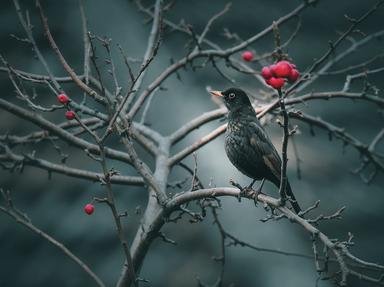Quiz Answer Key and Fun Facts
1. Parrots are first mentioned in literature over 3,000 years ago! They appear in a hymn to the awakening morning in the Rig Veda, the oldest piece of Indian literature. Another reference to parrots in Indian literature comes from the Kama Sutra. According to this Indian sex manual, what is one of the sixty-four practices that men had to master?
2. Macaws play an important role in Maya mythology, specifically the Maya creation myth. Most parrots pride themselves on their bright and beautiful plumage, but what did this macaw try to do?
3. Parrots were also popular among the Greeks and Romans. They were first brought back from India following the campaigns of a very famous Greek general. In fact, a parrot is even named in his honor! Who was this, and what is the name of the parrot?
4. The Age of Exploration brought a renewed interest in parrots to Europe. Explorers of exotic, uncharted lands were duly impressed by the huge, marvelously colored parrots, some "as large as hens!" Needless to say, the parrots were very memorable! Is it true that, at some point, both South America and Australia were named "the land of parrots"?
5. The beauty of parrots has attracted the attention of a number of artists. John Gould's illustration of the Leadbeater's (or Major Mitchell's) cockatoo, and John James Audubon's painting of the Carolina parakeet, are justly famous. My favorite parrot artist is famous, but not as an artist! He's probably best known as the author of the children's poem, "The Owl and the Pussycat." Who would this be?
6. Not all encounters between parrots and people have been so positive. The Dutch Admiral Jacob van Neck and his crew saw the large, flightless parrots of the Mascarenes as God's gift to their pantry. The parrots soon went extinct. They shared their fate with which other famous flightless bird of the Mascarenes?
7. Parrots have also suffered severely because of the pet trade. What happens to most captured parrots?
8. Parrots are probably most famous for their ability to talk. But do they know what they're saying? Which scientist has shown that her African grey parrot Alex is capable of using words in context?
9. No quiz about people and parrots would be complete without a question about Monty Python's famous "Parrot Sketch." This sketch features a man attempting to return a parrot which he purchased "not half an hour ago from this very boutique"! What was this parrot's most notable feature?
10. The title of this quiz, "We'll Always Have Parrots," is a pun on a line from the movie Casablanca, "We'll always have Paris." There is another parrot reference in Casablanca-- the Blue Parrot club. Was there really a blue parrot in the club?
Source: Author
pu2-ke-qi-ri
This quiz was reviewed by FunTrivia editor
gtho4 before going online.
Any errors found in FunTrivia content are routinely corrected through our feedback system.
